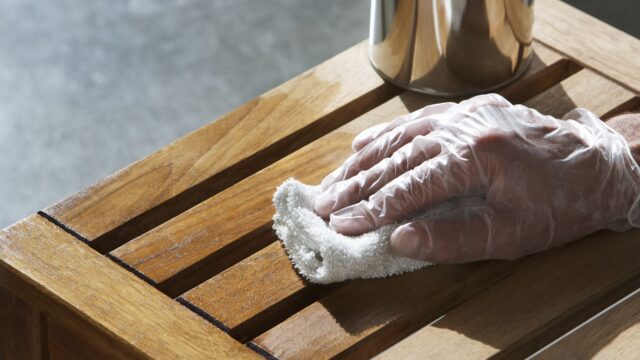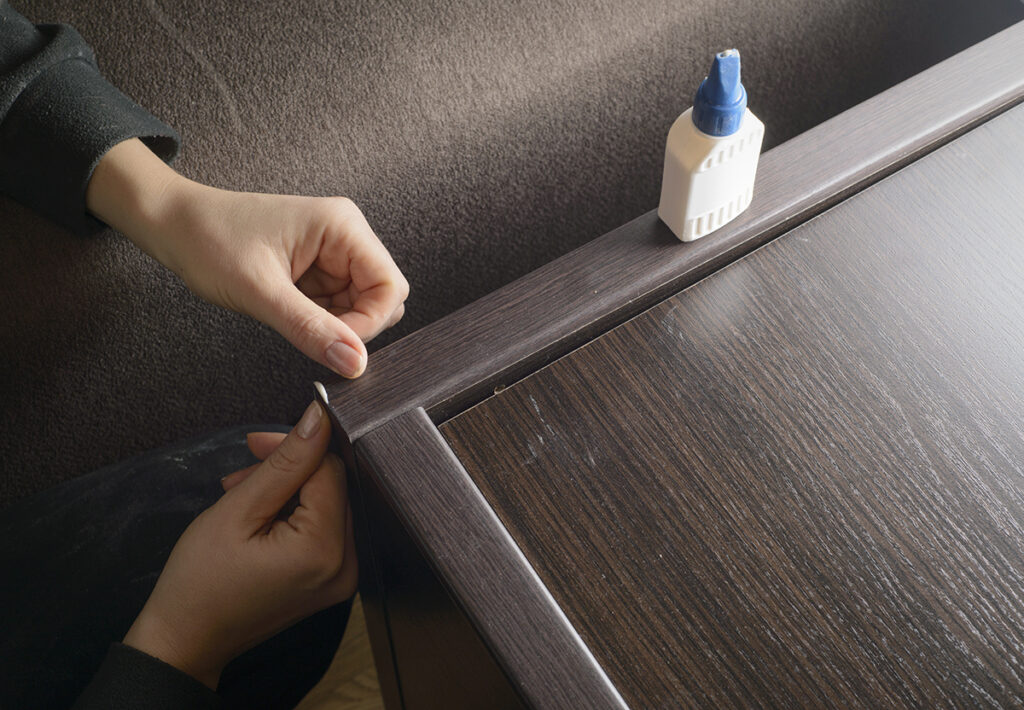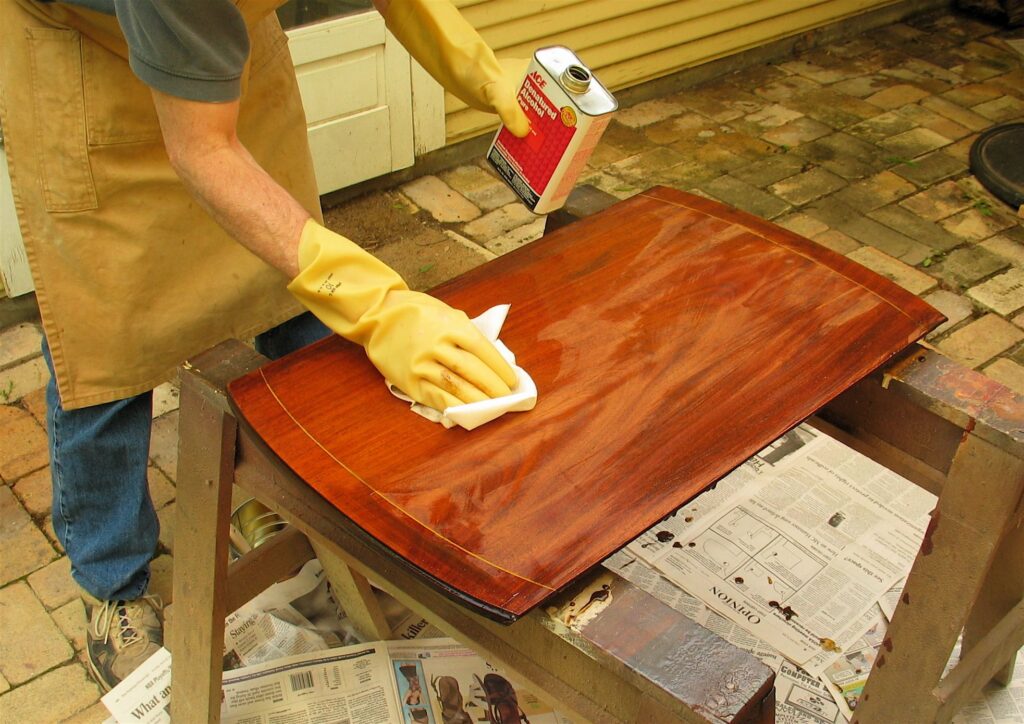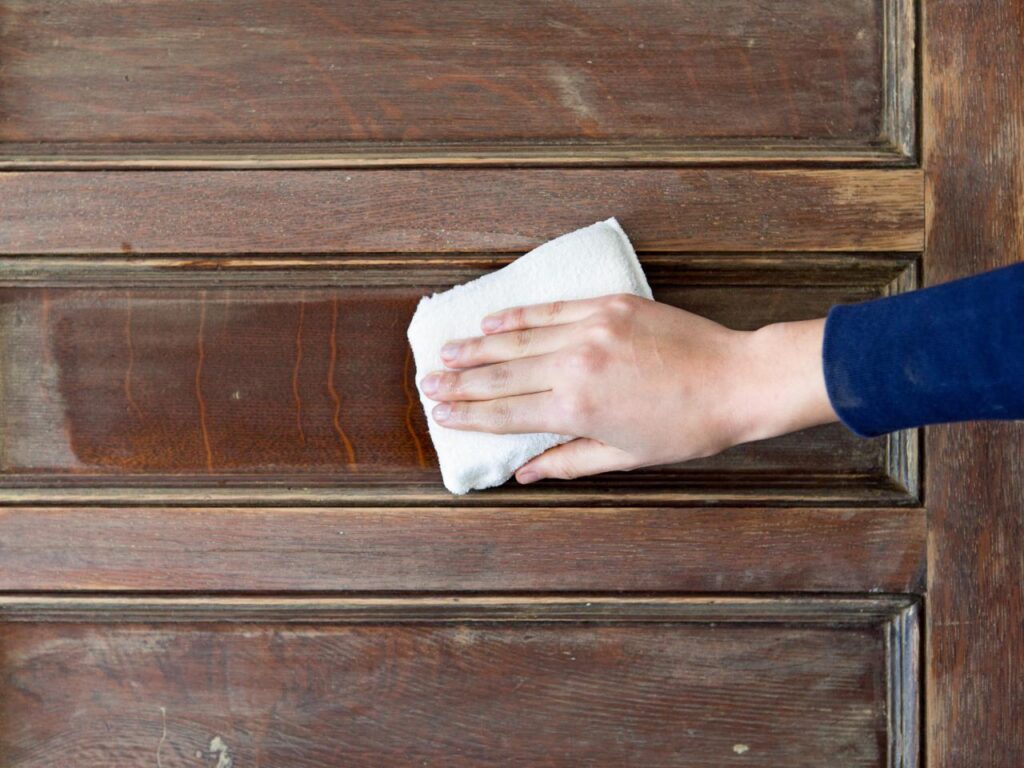
You just found the find of the century at the local swap meet. A great piece of furniture that just looks a little worn. All it needs is a bit of tender loving care and a new coat of varnish. But you need to get rid of the tired old varnish that is still there. Well, here is a list of ten tips to help you in that task.
Paint thinner/stripper
This is probably the easiest way to get rid of varnish and paint from wood. All you need to do is apply the paint thinner, let it sit for a few minutes, and then with a scraper or a bristle brush, to remove the bubbled varnish from the wood. You can then use steel wool to get rid of the smaller remnants of paint leftover. You should use caution though; harsh chemicals can actually damage the wood and make your priceless item worthless.

Sandpaper
Hand sanding your piece is probably the best way to remove the varnish but is also the most labor-intensive. You should start with a rougher grit paper to rough up the paint and the layer of wood underneath. Gradually use finer and finer grit to completely remove the varnish and have a nice smooth area to work with later. Again, this will take time and patience, so be prepared to work.
Sanders
There are some sanders that will help out in the removal of varnish, as well as making it less labor-intensive. There are many types of sanders, belt, orbital, and random orbital. Be sure to choose the right one for your job. With the use of sanders, be careful not to sand away too much of your surface. You may end up with no area to work with!

Burlap
Now here is an item I never would have thought to use to remove varnish. You can use pieces of burlap in places where there are no flat surfaces to use sandpaper on. Items like table legs, or rounded corners. Used in conjunction with paint thinners, you can apply a small amount of paint thinner to the table leg, and use the burlap piece to remove the varnish. Take each end of your burlap piece and ‘saw’ at the table leg to remove the varnish.
Respirators
One tip I can give you is that you should have is a respirator mask to help keep out the fumes from the paint thinner, as well as the dust from the use of the sandpaper as well.

Scrapers/brushes
Normally, paint removers are removed from wood by the use of scrapers. You want to make sure that you use a scraper that won’t damage the wood you are working with. The best type of scraper is a pull scraper. You can make a pull scraper by using a metal file or grinder to round off the edges of your scraper so it won’t damage your wood accidentally. To use a pull scraper, apply the paint thinner for the proper amount of time, and then pull the scraper towards you to remove the bulk of the paint from the wood. It may often take two or three applications to remove the bulk of the paint. After that, you may use one of the methods above to get the remaining small stuff, like the burlap or fine sandpaper.
Heat Guns
Another method to remove paint and varnish is through heat. This method can be very damaging to your piece because the heat used is enough to scorch and burn the wood that you are trying to remove the paint from. A good tip is to keep the nozzle moving, trying not to concentrate is any one area for too long. Also, I wouldn’t recommend using the old-style open flame heat gun, it is very dangerous. Even though the best heat guns are electric, you should still keep a bucket of water handy, just in case a flame happens.

Chemicals
You can use just about any toxic chemical to remove paint and varnish. While this may not be the best for the environment, it certainly can be an easy way to get the job done. One such chemical is Methylene Chloride. It is a thick liquid that can be applied to your surface to wear away the paint. The manufacturer adds wax to the mixture to help the liquid not evaporate too quickly. You need to allow plenty of time for the methylene chloride to work. Use a paintbrush to smooth the methylene chloride on your surface. The most common mistake with the use of this chemical is the poking and prodding of the surface area. This breaks down the wax barrier and speeds up the evaporation process. Putting wax paper over the chloride will also help in keeping it from evaporating.
Power Tools
Along with sanders, there are other power tools you can use to remove paint and smooth out the piece you are working on. The Wagner Paint Eater uses an open-web design disc to remove paint and smooth out in one easy step. It runs about 90 dollars but seems like a good tool to look into. And while you’re at it, you can use other power tools to tweak the furniture design or make a new one that will go well with it. These options will get you excited to do more than just remove varnish, but actually take on a new but quick plywood project.

Safety
The last and most important tip is to be safe. The use of chemicals can be harmful to you and your family, so be sure you are working in a well-ventilated area and use masks to help you breathe. Be sure also to wear safety goggles when using power tools and sanders. It is always better to be safe than sorry.
There you have it, my ten tips to help you remove varnish and paint from your next swap meet find of the century!














